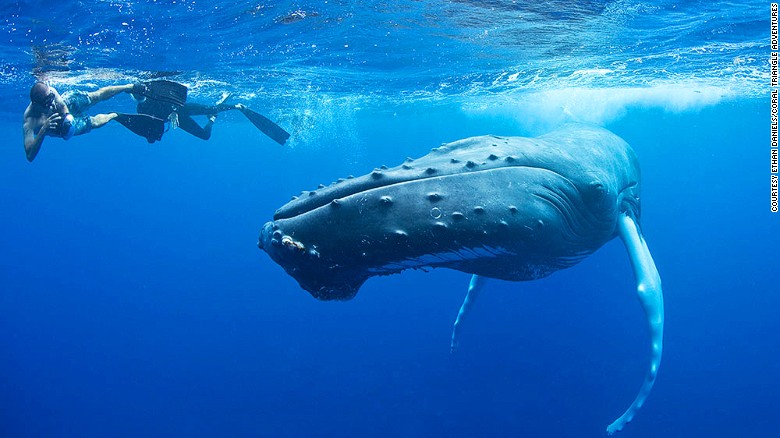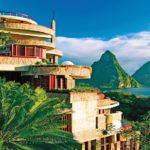SANTO DOMINGO — The Dominican Republic Ministry of Tourism teamed up with ABC News’ “Good Morning America” for a once-in-a-lifetime adventure visiting the beautiful north coast of Dominican Republic to swim alongside humpback whales within their natural habitat. This may also be a dream of yours that you’ve always wanted to tick off your bucket list. If so, as well as visiting the Dominican Republic, maybe taking a vacation to California to go san diego whale watching might be something worth looking into. Hopefully one day, you’ll be able to turn this dream into a reality!
Ginger Zee, Good Morning America’s (GMA) Chief Meteorologist, ventured out into the Atlantic Ocean to witness the beauty of these formerly endangered animals up-close and share the experience live with their viewers nationwide.
Dominican Republic’s Silver Bank Sanctuary, situated roughly 80 nautical miles north of resort city of Puerto Plata, is one of only two areas in the entire world where nature lovers can experience an in-water encounter with humpback whales.
Each spring, 5,000 to 7,000 Northern Atlantic humpback whales migrate toward the north coast of Dominican Republic to the Silver Bank for mating season, where they can comfortably mate and nurse newborn calves. Research indicates that the Silver Bank is home to the largest population of seasonal migrating humpbacks in the North Atlantic Ocean, if not the world.
From January through April in the Silver Bank, and January through March in Samaná Bay, wildlife and thrill-seeking enthusiasts flock to the coast to observe whales playing, vying for each other’s attention, nursing and jumping—you can even hear the yearning song of the male humpback whales, who become especially vocal during mating season.
During the segment Zee found herself face-to-face with a pod of the world’s most magnificent animals, humpback whales, both mothers and their calves. The phenomena, displayed on live TV, gave viewers a taste of the pristine waters of the Silver Bank.
During the segment, Zee not only experienced in-water interactions with humpback whales, she also shared how travelers can have gentle encounters with these majestic animals and detailed existing endangerments that they are facing today, including plastic waste, entanglement by fishing gear and nets, among other factors.
Leading up to the live show, Zee, among other ABC personalities, teased the segment on social media channels and the show inviting fans to join the magic from afar.
“For nearly 60 years, Dominican Republic has collaborated with environmental agencies and leaders like the United Nations and The Nature Conservancy to protect our country’s ecological treasures and marine life,” said Magaly Toribio, Marketing Advisor for the Dominican Republic Ministry of Tourism. “Whether visitors wish to swim alongside humpback whales or observe marine life from aboard a boat, the experience is immersive and magical, bringing thousands of visitors each year closer to nature.”
Aquatic Adventures is one of three highly-experienced outfitters located just outside of beautiful Puerto Plata that offer this truly unique experience. Each tour operator is committed to facilitating peaceful encounters between humans and whales. Professional guides instruct tourists on whale etiquette, allowing the whales to choose when they interact and to set the terms of the interaction.
Travelers headed to Samaná in search of humpback whales are in luck as well; each season nearly 1,500 to 2,000 humpback whales migrate to the waters of Samaná Bay. The region located along Dominican Republic’s northeast coast is home to countless experts who dedicate their time to sharing this experience with visitors. Since 1983, animal advocate and conservationist Kim Beddall has been leading Samaná whale watching expeditions and sharing her passion about the incredible creatures. GMA also had the opportunity to connect with Beddall, a pioneer of whale tours in Dominican Republic, and discuss the annual migration of these fascinating animals, among other fascinating details.
If you can’t get on a boat excursion but still want to observe Samaná’s majestic humpback whales from land, the Punta Balandra observatory—inaugurated in 2011, and approximately 14 kilometers (9 miles) northeast of Santa Bárbara de Samaná—offers a unique perspective. Aside from spotting the humpback whales, you’ll get a splendid panoramic view over the peninsula’s surrounding coastline. Also, in Santa Bárbara de Samaná is the iconic Whale Museum. Here you’ll learn why the Dominican Republic’s northeastern coast is one of the most important humpback whale sanctuaries in the world. Exhibits include the full, 40-foot skeleton of a humpback whale found in 1993.
Nestled within the Caribbean mountains on the Northeast Coast of Dominican Republic, the Puerto Plata and Samaná regions are famous for its quiet, unspoiled beaches, radiant turquoise ocean waters and lush green mountains, making it a bucket-list destination for eco-tourists and travelers alike.
To learn more about how to plan your own whale-watching excursion or in-water encounter in Dominican Republic, visit www.GoDominicanRepublic.com




